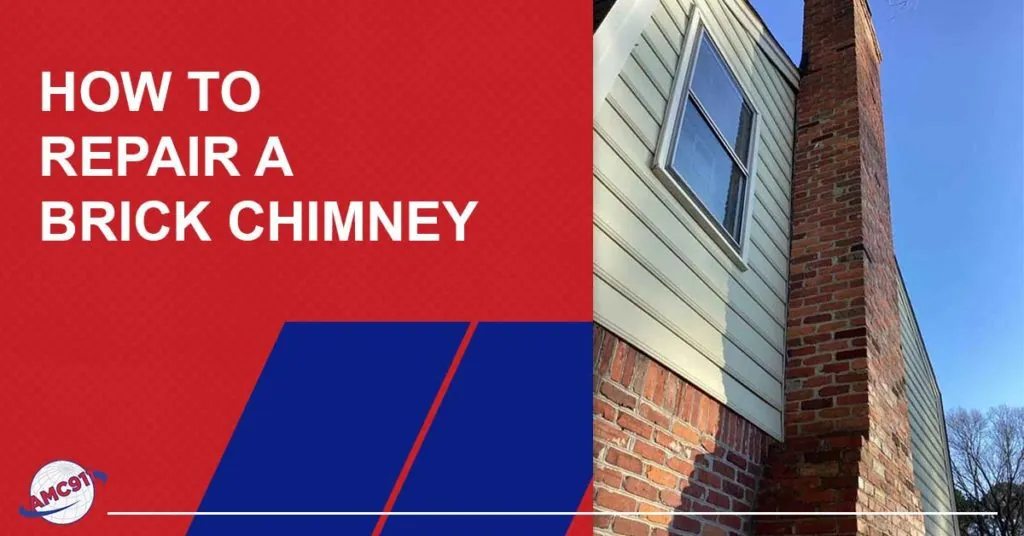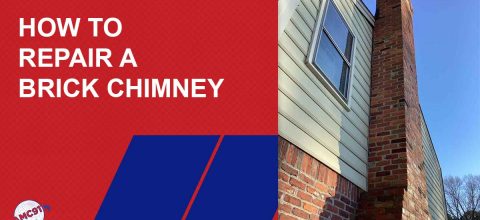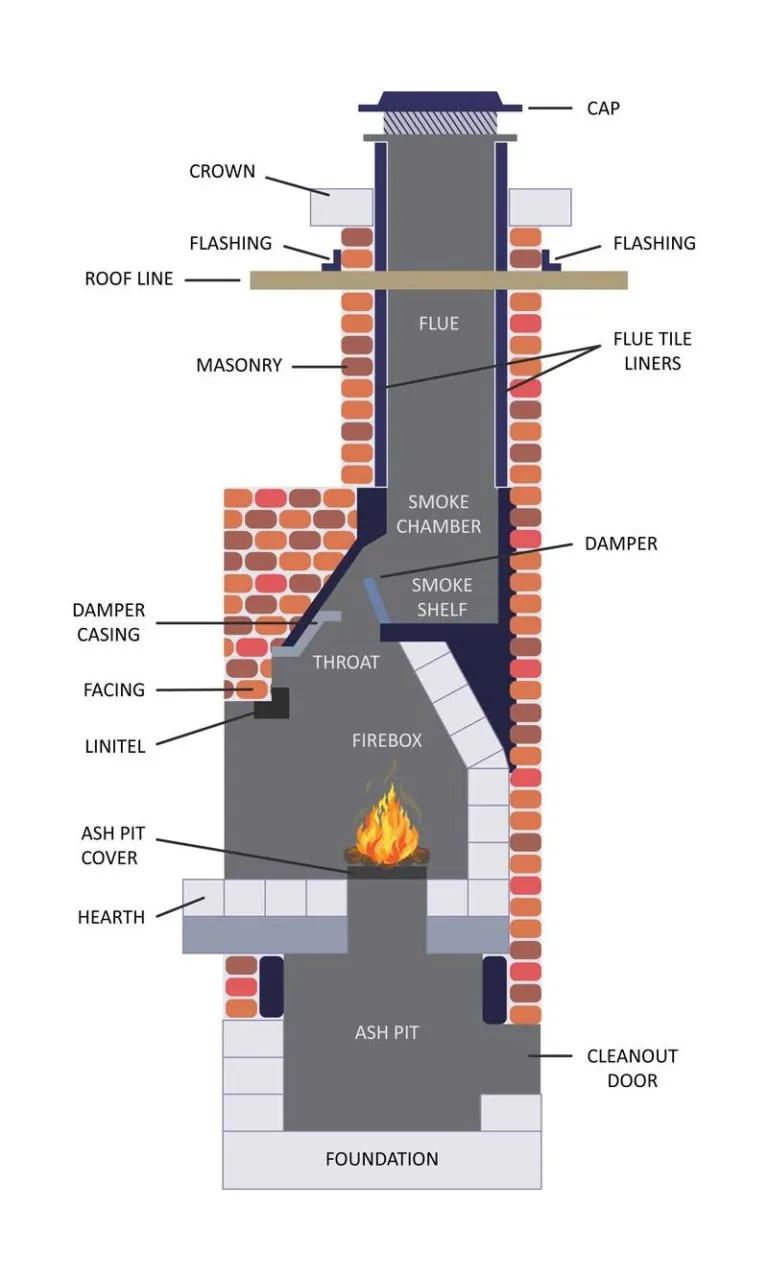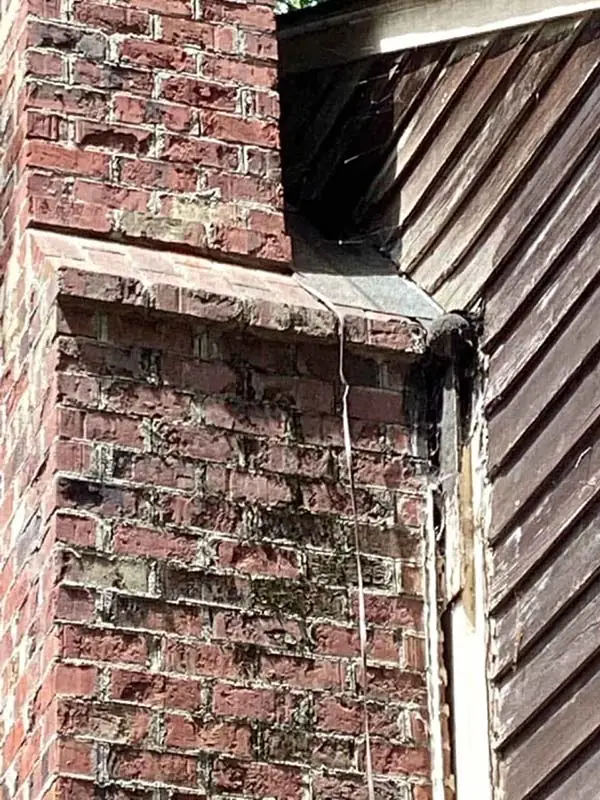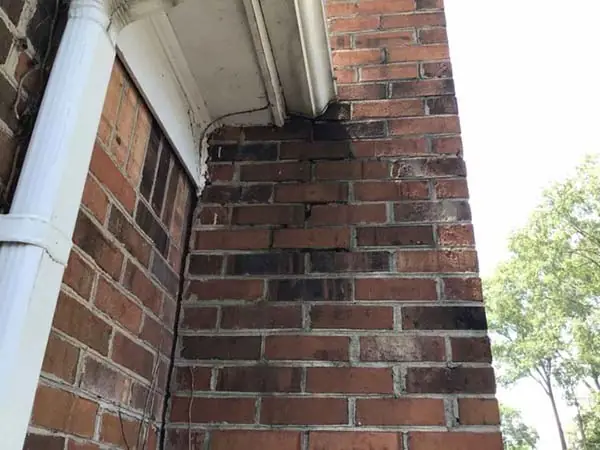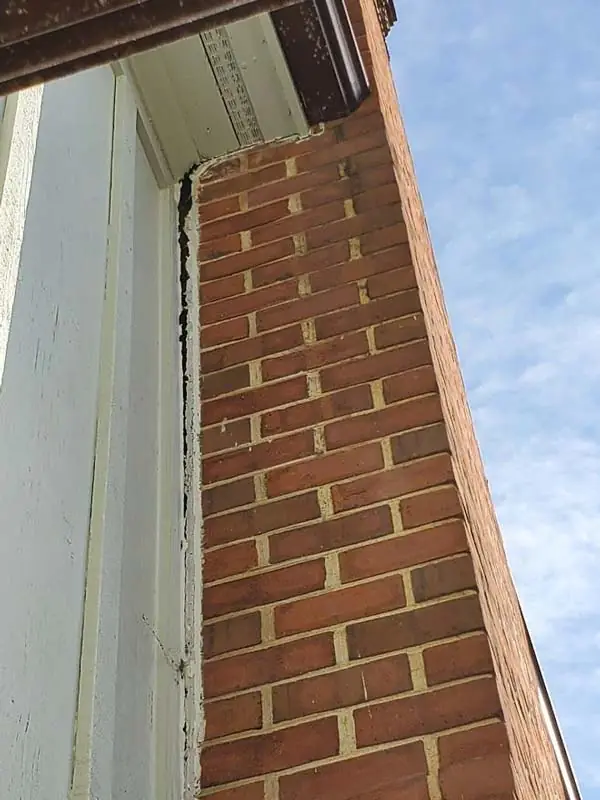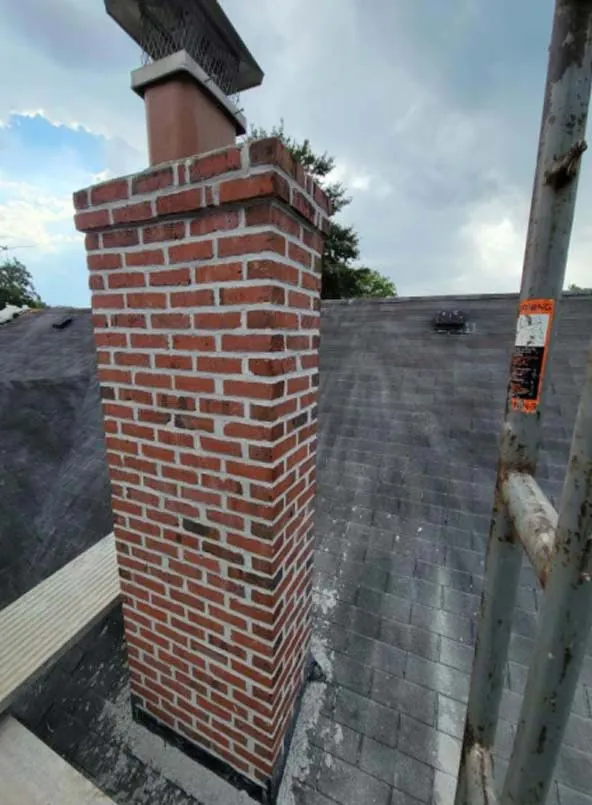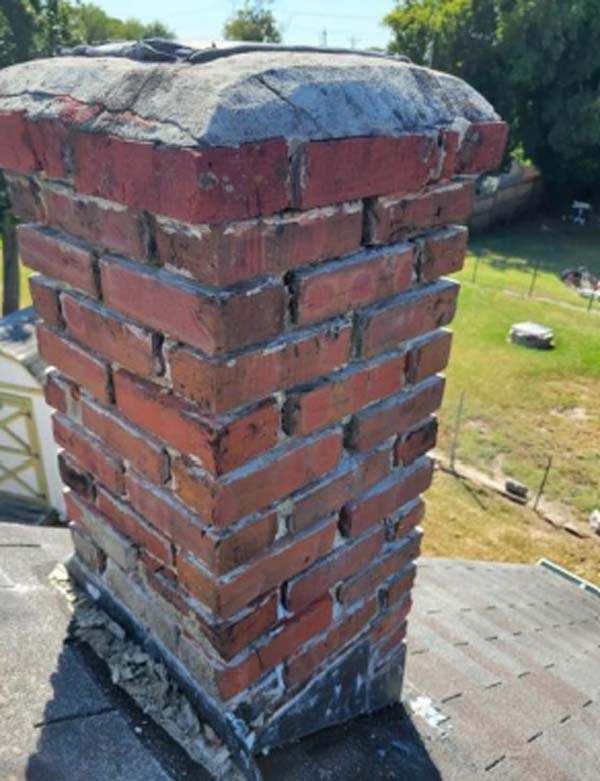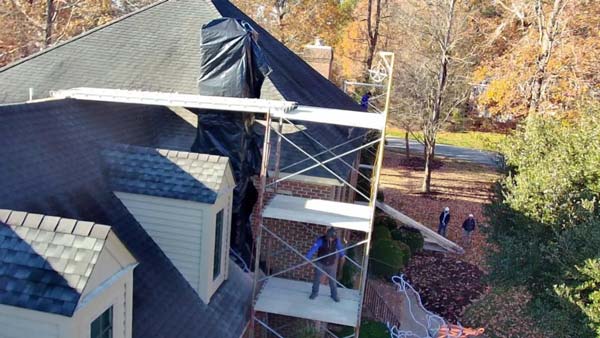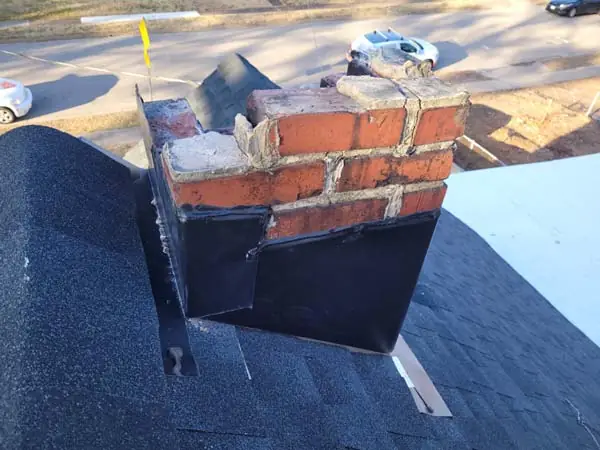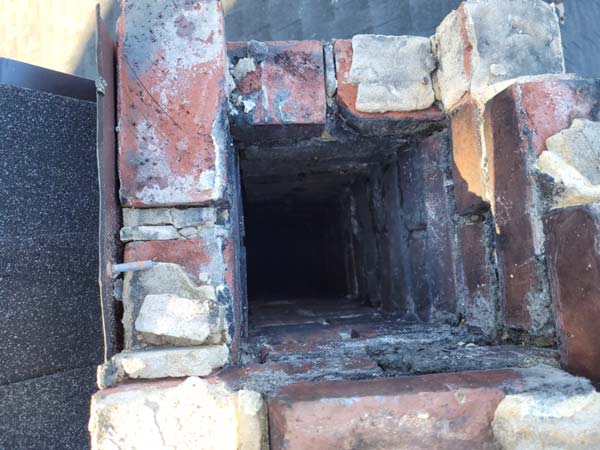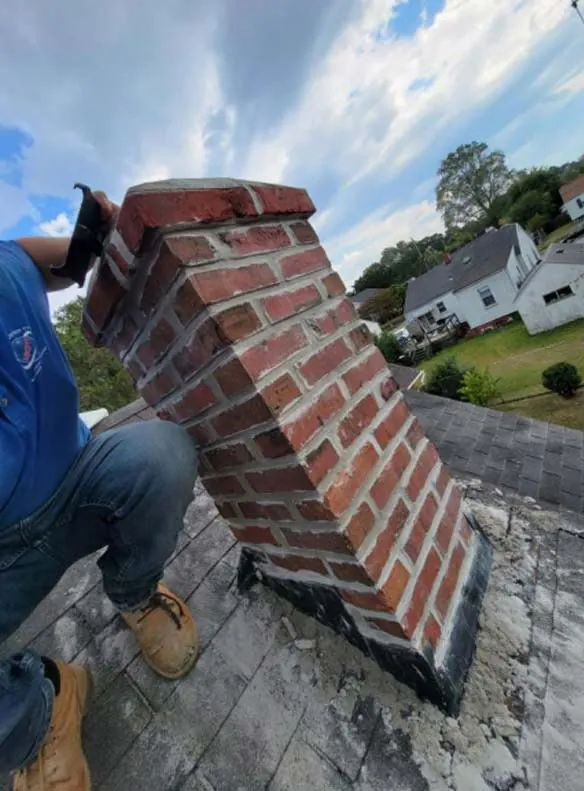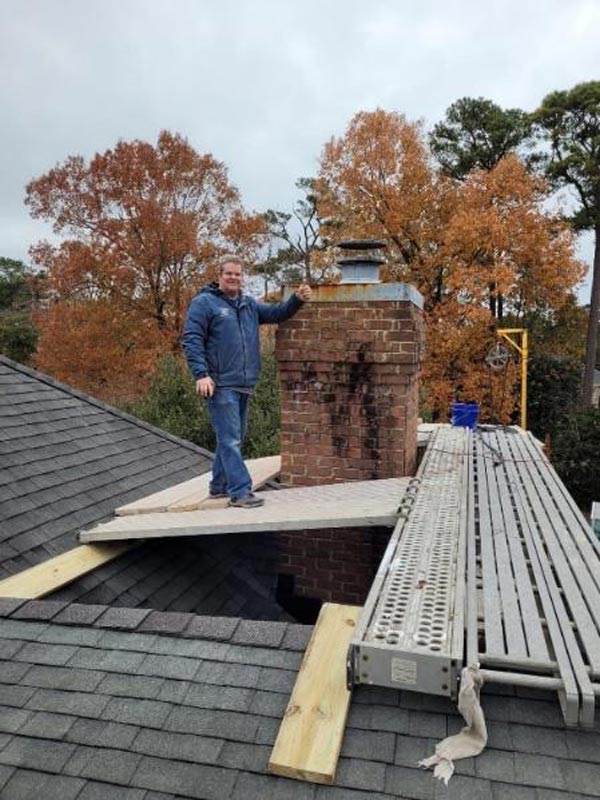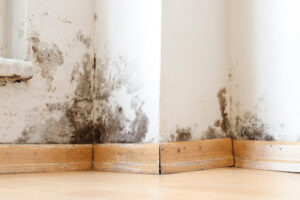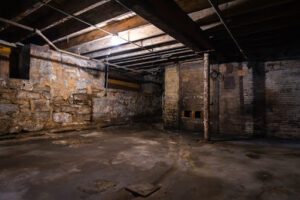Looking for information about brick chimney repair? Fireplaces are cozy, but if you want to use one safely, your home’s chimney will need to be maintained and promptly repaired when necessary. Failure to do this could result in a fire that could destroy your home.
This article will cover the basics of brick chimneys, common problems with brick chimneys, and types of brick chimney repair.
What Is A Chimney, And How Does It Work?
A chimney helps fuel combustion in a fireplace by generating airflow. The fire in your fireplace produces hot air that goes up the chimney. This hot air creates a draft that sucks air into the fireplace to keep the fire burning.
Chimneys are made from various materials, including brick, stone, and metal. This article focuses on true brick chimneys, not chimneys that merely have a brick façade.
Chimneys are made up of various parts, including:
- Flue – When most people think of a chimney, they think of the chimney stack. This is the tall part of the chimney that sticks up. The flue is the interior lining of the chimney stack. The flue goes from above the chimney crown down to the smoke chamber. The flue is there to allow exhaust gases to escape.
- Cap – The chimney cap’s job is to keep water, animals, leaves, and other debris out of the chimney. It also prevents windy downdrafts that could suck debris down through the chimney and into your home. The cap also prevents fireplace embers from coming out of the flue and landing on your roof.
- Crown – The chimney crown keeps water away from the brick used to build the chimney. The crown keeps water from running down the brick and causing deterioration.
- Flashing – The flashing prevents water from getting in between the chimney and the roof, which could deteriorate rafters and cause other problems. The flashing, cap, and crown are designed to prevent water from entering the chimney.
- Damper – The damper keeps cold air from traveling down the chimney and into your home when the fireplace isn’t in use.
- Smoke Chamber – Smoke travels from the firebox into the smoke chamber and then into the flue. The smoke chamber directs the smoke into the flue.
- Smoke Shelf – The smoke shelf prevents the smoke from going back into the fireplace.
Common Problems With Brick Chimneys
Common problems with brick chimneys include, but aren’t limited to:
- Problems with the flue
- Problems with the chimney liner
- Brick and mortar deterioration
- Problems with the chimney cap
- Chimney wasn’t built properly
- Flashing problem
- Issues with the chimney crown
- Chimney cracks
Chimneys And Water
Chimneys and water don’t mix. Water will cause damage to every part of your chimney. Therefore, a properly built and maintained chimney will ensure only the chimney’s cap and crown come into contact with water. Of course, driving rain will sometimes strike the side of the chimney’s stack, and this can’t be avoided. That’s why some people coat the outside of the chimney with a sealant.
Common Types Of Brick Chimney Repair
Chimney Flue Repair
The flue is the inside walls of the chimney stack. Its job is to channel exhaust from the fire up and out of your home. If the brick and mortar in the flue have deteriorated or there’s a build-up of debris or creosote, this is a safety hazard that could result in a devastating fire or carbon monoxide poisoning. Sometimes flues have a metal liner which can also develop problems such as holes and rust. A damaged flue – because it affects the draft – can also reduce a chimney’s ability to sustain a roaring fire.
Chimney flue repair might include removing creosote from the flue, replacing the brick and mortar inside the flue, or installing a new liner.
Chimney Damper Repair
A chimney damper prevents smoke from entering your home when a fire is burning and keeps cold air from coming down the flue and into your home when you’re not using the fireplace. Therefore, if there’s cold air in your home when there’s no fire in the fireplace or smoke when there is a fire burning, it could be a problem with the damper. Chimney dampers can be both repaired and replaced.
Brick and Mortar Deterioration
Over time, the brick and mortar used to build the chimney will deteriorate. The brick will start crumbling, the mortar flakes, cracks will develop, etc. Water speeds up brick and mortar deterioration. However, the quality of the bricks and the construction also play a role.
One serious problem related to brick and mortar deterioration is cracks in the flue. The smoke going up the chimney contains particles that accumulate inside the flue. If there are cracks in the flue, the particles will get inside those cracks and be impossible to clean. If you’re not removing this accumulated build-up of creosote – a byproduct of wood burning – because it’s in the cracks, a spark could ignite it. Chimneys need to be cleaned every so often to prevent creosote build-up.
The good news is that both brick and mortar deterioration can be repaired. Both the damaged bricks and mortar can be removed and replaced. Removing and replacing the mortar is called tuckpointing or repointing. For more information see, What is Chimney Repointing?
Chimney Flashing Repair
Flashing is what you see around the base of the chimney, where it meets the roof. Chimney flashing is there to keep water from getting into your home. Remember, the chimney stack is sticking up out of a hole in your roof. The flashing seals that hole.
Water, animals, and poor quality materials and installation can cause a chimney’s flashing to fail. Fortunately, chimney flashing can be either repaired or replaced.
Chimney Crown Repair
The chimney crown is made from concrete and overhangs the chimney stack by around 2-3 inches. The crown’s job is to direct water away from the flue and the bricks on the outside of the stack. Like the other parts of a chimney, chimney crowns aren’t indestructible. If a chimney crown has deteriorated, it will need to be either repaired or rebuilt.
What About DIY Brick Chimney Repair?
Brick chimney repair is not ordinary masonry work. Therefore, we strongly advise against attempting to repair a brick chimney as a DIY project. Fire codes and design specifications stipulate that only experienced chimney masons should repair chimneys. Of course, it’s also dangerous to crawl around on rooftops.
Brick Chimney Repair Cost
The cost to repair a brick chimney will depend on various things, including your geographical location, the type and severity of the problem, and the chosen repair solution. Contact a foundation repair contractor in your area with experience repairing chimneys and ask for an inspection and estimate.
Chimney Maintenance
Homeowners should have a professional inspect their chimney annually to ensure safe use and help prevent expensive repairs. Of course, without going up on the roof, homeowners should keep an eye out for problems with loose or cracked bricks, disintegrating mortar, dampers that don’t work correctly, etc. Preventative chimney maintenance is less expensive than chimney repair.
If you think your home’s brick chimney might need a repair and you’re in our service area – Hampton Roads and the surrounding areas in Virginia – contact us today for an inspection and repair estimate.

